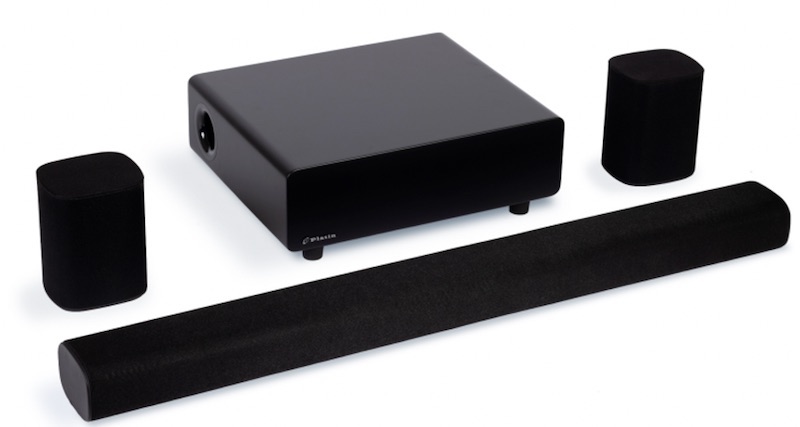Tony Ostrom says that WiSA E represents the culmination of more than a decade of wireless audio technology development and engineering.
The WiSA Association President explained that WiSA E “carries on a lot of the characteristics and capabilities” of preceding “WiSA HT” technology, in its ability to provide high-definition, low-latency, and tightly synchronized wireless audio. However, WiSA E also fulfills a need for manufacturer licensees to be being easily integrated into sources through software. By licensing WiSA E software and embedding WiSA E’s multichannel immersive audio functionality into their source devices, a licensee can eliminate the costly burden of additional hardware and allow their end users to activate the embedded audio functionality by purchasing speakers designed to connect with the media device.

This new model seeds the market with WiSA E capabilities and gives the consumer the ability to upgrade their home entertainment system at any time they choose. The so-called “activation model” enables manufacturers to cost-effectively build audio-rich features which can generate aftermarket revenue from the sale of external speakers.
“We can put WiSA E firmware in the device and leverage its internal Wi-Fi capabilities and have multi-channel audio distributed from that source with no extra parts,” Ostrom explained.
Ostrom noted that a WiSA E license allows a brand to build WiSA E into their products to provide consumers with a range of wireless immersive audio options including full interoperability with any of the WiSA E-enabled speakers offered by the many WiSA Association speaker brands.
Display manufacturers have responded favorably to WiSA E, Ostrom says, because they can now wirelessly attach to “whatever speakers they want,” and the internal TV speakers can still work in tandem with external speakers with very low latency.

“A lot of these [TV manufacturers] don’t make speakers, but now they could be interoperable with other brands without having to add anything to their TV other than firmware,” he added.
Over the past five months, WiSA has announced several licensing agreements with (so far unnamed) TV, projector, and set-top box brands and demonstrated operability with multiple SoCs (System on a Chip), a number of different Wi-Fi chips, and across a wide range of other consumer electronics devices, such as HDTVs, soundbars, projectors, mobile devices, streaming media devices, and speakers.
Back in November, Platin Audio became the first soundbar in the industry to leverage WiSA E wireless software. The Milan 5.1.4 Soundbar System supports 10 audio channels, including four channels of up-firing Dolby Atmos audio (two front and two rear). The WiSA E-enabled Milan 5.1.4 Soundbar System is now available for purchase nationwide via platinaudious.us, Amazon, and more retailers.
WiSA E helped enabled a retail price of $799 MSRP for the Platin Milan package, which includes the soundbar, a pair of surround speakers and subwoofer.
Each component of the system, the soundbar, surround speakers, and subwoofer, utilizes the WiSA DS wireless module and WiSA E software to manage all wireless audio and communication between the units.
The Milan Soundbar App for Android and iOS allows audio customization to ensure the Milan 5.1.4 Soundbar System can be personally tuned for the space in which it lives, customized for each user’s listening preference.
At CES this past January, WiSA also showed how, with WiSA E embedded into Android mobile phones and tablets, you could easily switch audio sources to streaming video quality audio to speakers. WiSA E embedded onto a low-cost Android streaming media stick also enabled 2.1 high-quality multichannel audio with no change to existing hardware.
“We were blown away by the overwhelmingly positive reaction to WiSA E,” said Tony Parker, WiSA vice president of technical marketing and strategy. “Our customers have never seen wireless multichannel audio capabilities in so many different product categories. It just goes to show the power of software that can be embedded into devices with little or no additional hardware costs. WiSA E not only enables many more product categories to offer multichannel audio capabilities, but it also opens the door for new revenue models for our customers.”







![ecobee premium airzone control The ecobee Smart Thermostat Premium. [Photo credit | ecobee]](https://restechtoday.com/wp-content/uploads/2025/06/ecobee-premium.jpg)
![Hub 3_02 The SwitchBot Hub 3 provides a user-friendly solution to the growing complexity of modern smart homes. [Photo credit | SwitchBot]](https://restechtoday.com/wp-content/uploads/2025/06/Hub-3_02-scaled-e1750179791687.png)
